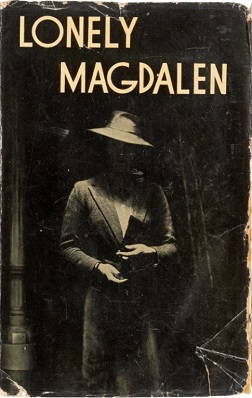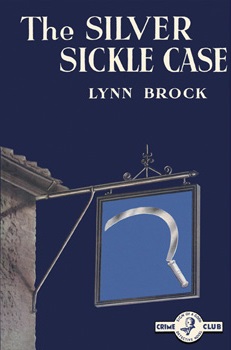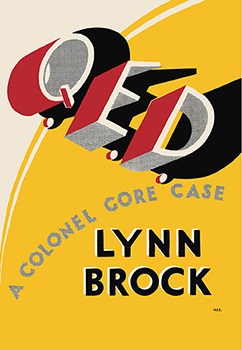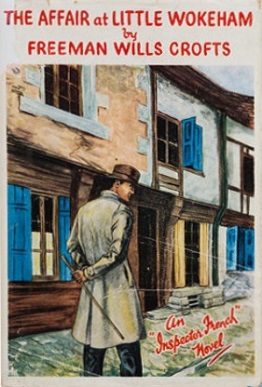
Lonely Magdalen is a 1940 mystery detective novel by the British writer Henry Wade. It was the fifth in a series of seven novels featuring the character of Inspector Poole, published during the Golden Age of Detective Fiction. The book focuses more closely on police procedural than the traditional puzzle format. There was a thirteen-year gap between this and the next entry in the series Too Soon to Die.

The Verdict of You All is a 1926 mystery detective novel by the British writer Henry Wade, his debut novel. Both this and his following novel The Missing Partners revolve around potential miscarriages of justice. It was published in the United States by Payson and Clarke in 1927. A success it launched his career as one of the prominent writers during the Golden Age of Detective Fiction. The title refers to the traditional question asked in court by a judge of the jury to establish whether they have reached a unanimous verdict.

Too Soon to Die is a 1953 mystery detective novel by the British writer Henry Wade. It was the sixth in a series of seven novels featuring the character of Inspector Poole, published during the Golden Age of Detective Fiction. It followed a thirteen year gap since the publication of the previous novel Lonely Magdalen.

The Cask is a 1920 detective novel by the Irish-born writer Freeman Wills Crofts. His debut novel, it is considered his masterpiece. Long after the author's reputation had declined, this book was still hailed by critics as a cornerstone of the genre Crofts had been working as a railway engineer before writing the novel, but its success launched him as one of the leading writers of the Golden Age of Detective Fiction. He later went on to create the character of Inspector French of Scotland Yard who appeared in a long-running series of novels.
Irish writer Alister McAllister [1877-1943] wrote several plays under the pseudonym Anthony Wharton and later, after moving to England, wrote a series of mystery novels using the pseudonym Lynn Brock.

The Slip-Carriage Mystery is a 1928 mystery detective novel by the Irish-born writer Lynn Brock. It was the fourth novel in his series featuring the character of Colonel Wyckham Gore. The previous novels in the series established Gore a popular character during the early stages of the Golden Age of Detective Fiction. A review in the Times Literary Supplement observed "The multiplication of false leads at the beginning is carried a little too far, and the story is at its best when the movement is greatest as it approaches and reaches its end".

The Mendip Mystery is a 1929 mystery detective novel by the Irish-born writer Lynn Brock. It was the fifth of seven novels in his series featuring the character of Colonel Wyckham Gore, one of the most prominent investigators during the early stages of the Golden Age of Detective Fiction. It was published in America with the alternative title of Murder at the Inn.

The Deductions of Colonel Gore is a 1924 detective novel by the Irish-born writer Lynn Brock. It was the first in his series of seven novels featuring the character of Colonel Wyckham Gore. Gore enjoyed popularity during the early stages of the Golden Age of Detective Fiction. It was also published under the alternative title The Barrington Mystery.

Colonel Gore’s Second Case is a 1925 detective novel by the Irish writer Lynn Brock. It was the second in his series of seven novels featuring the character of Colonel Wyckham Gore. Gore enjoyed popularity during the early stages of the Golden Age of Detective Fiction. After solving his first case Gore now establishes his own detective agency.

The Kink is a 1927 mystery detective novel by the Irish-born writer Lynn Brock. It was the third novel in his series featuring the character of Colonel Wyckham Gore, one of many investigators active during the Golden Age of Detective Fiction. It is sometimes referred to as Colonel Gore’s Third Case. The novel is noted for being comparatively sexually explicit for the era. Dashiell Hammett wrote a contemporary negative review of the book in The Saturday Review.

The Dagwort Coombe Murder is a 1929 mystery detective novel by the Irish-born writer Lynn Brock. It was the first stand-alone novel by Brock following the success of his Golden age detective Colonel Gore. It was published in the United States with the alternative title The Stoke Silver Case.

The Silver Sickle Case is a 1938 detective novel by the Irish-born writer Lynn Brock. Best known for his Colonel Gore series of mysteries, the novel introduced an alternative detective character Sergeant Venn of Scotland Yard assisted by Detective Constable Kither. It was followed by two sequels.

The Riddle of the Roost is a 1939 mystery detective novel by the Irish-born writer Lynn Brock. It was the third and last in his trilogy featuring the characters of Scotland Yard detective Sergeant Venn and Constable Kither. It was Brock's penultimate novel, followed the next year by The Stoat a final entry into the series of his best-known character Colonel Gore.

Q.E.D. is a 1930 mystery detective novel by the Irish-born writer Lynn Brock. It was the sixth of seven novels in his series featuring the character of Colonel Wyckham Gore, one of the most prominent investigators during the early stages of the Golden Age of Detective Fiction. It was published in the Under States with the alternative title of Murder on the Bridge.

Sir John Magill’s Last Journey is a 1930 detective novel by the Irish writer Freeman Wills Crofts. It is the sixth in his series of novels featuring Inspector French, a prominent figure of the Golden Age of Detective Fiction. Much of the novel takes place in Northern Ireland, particularly around Belfast, where Crofts had spent a great deal of his younger years before moving to England. As with many of his puzzle mysteries its solution revolves around railway timetables as well as the possible distance a boat could cover in a certain time.

The Affair at Little Wokeham is a 1943 detective novel by the Irish writer Freeman Wills Crofts. It is the twenty-fourth in his series of novels featuring Inspector French, a prominent figure of the Golden Age of Detective Fiction. It was published in the United States under the alternative title of Double Tragedy.

Antidote to Venom is a 1938 detective novel by the Irish-born novelist Freeman Wills Crofts. It is the eighteenth in his series of novels featuring Inspector French, a Scotland Yard detective known for his methodical technique. It was reissued in 2015 by the British Library Publishing as part of a group of crime novels from the Golden Age of Detective Fiction.

Found Floating is a 1937 detective novel by the Irish writer Freeman Wills Crofts. It is the sixteenth in his series of novels featuring Inspector French, a Scotland Yard detective of the Golden Age known for his methodical technique.

Night Exercise is a 1942 detective novel by John Rhode, the pen name of the British writer Cecil Street. It is a stand-alone wartime novel from Rhode, best known for his long-running series featuring Lancelot Priestley. It was published in America by Dodd Mead under the alternative title Dead of the Night.

Nightmare is a 1932 thriller novel by the Irish-born writer Lynn Brock. It is an inverted detective story, and a stand alone work for an author best known for his series featuring the Golden Age detective Colonel Gore.



















